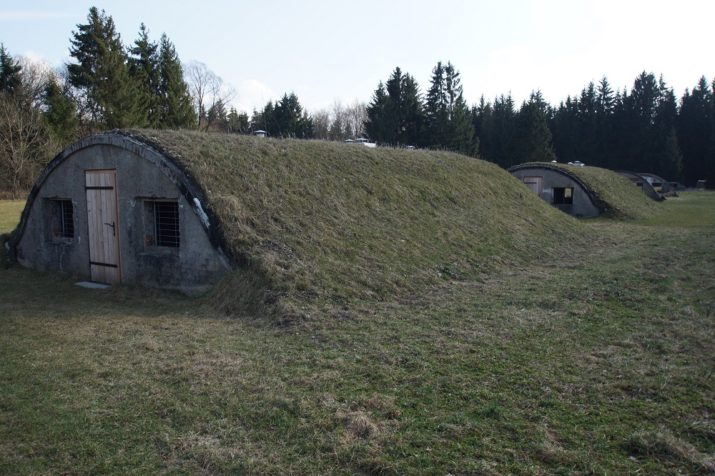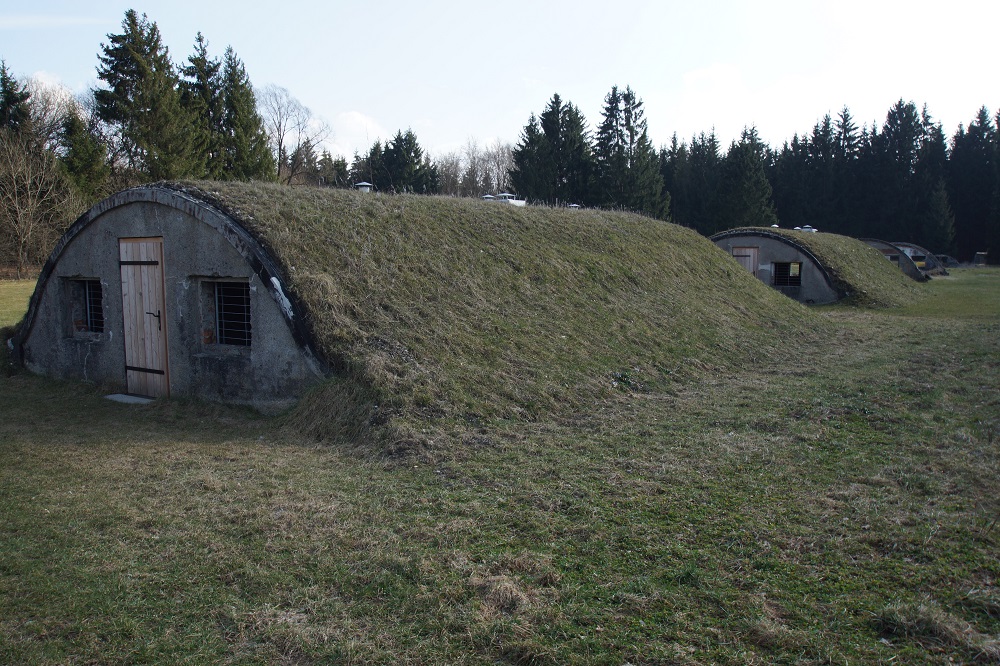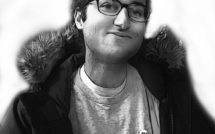

This is part of our special feature on Tourism: People, Places & Mobilities.
Historic places honoring the victims of Nazi Germany form a wide and expanding network of heritage sites in Europe. It is a new memorial landscape that now comprises thousands of markers, plaques, monuments, museums and visitor centers. It tragically reminds us of a genocide that resulted in the death of an estimated 6 million Jewish people, 2 million Romani people (“gypsies”), two hundred and fifty mentally and physically disabled people, and nine thousand gay men killed by the Nazi regime and its collaborators. Unquestionably, these historic places are destinations with a dark heritage attracting now millions of visitors, for instance, in Auschwitz and Dachau. While visitation to the sites associated with the atrocities committed during the twelve years of the Nazi era (1933-1945) are largely and fundamentally meant to be of an educational nature, trips to the former places of horror can also be considered an expression of “dark tourism,” that is “the act of travel and visitation to sites, attractions and exhibitions which have real or recreated death, suffering or the seemingly macabre as a main theme.”[1] Curiosity in and fascination with the dark side of humanity, and the desire to see for oneself what humans are capable of doing, are one of the inherent features and latent motivations for many participating in Holocaust tourism.
The Anne Frank House in Amsterdam, with the Secret Annex where the Frank Family and four other individuals went into hiding and young Anne Frank wrote her diary in 1942-1944, offers such an “accessible window into the Holocaust.”[2] In 1960, a small museum showcasing the historic site in the narrow building along the Prinsengracht Canal was set up. Fewer than fifty thousand people visited the site at the time. However, since 2007, annual visitation has surpassed one million subsequently creating capacity problems for the museum in the face of close to 1.3 million standing patiently in line. The management of the House has chosen not to turn away any visitors, and instead to lengthen visitation hours. It plans to restructure the entrance and tour of the House to allow more people to learn about Anne’s experience and fate in troubled times. Then, they decided to go “virtual.”[3] A high quality 3D version of the House (of both the Secret Annex and the front of the House with the former small business operations)[4] was crafted for online visitors. A young Anne Frank narrates inviting the online visitor to enter through a revolving bookshelf. From there, they follow her on a tour of the house, from the living room of the Secret Annex up to the attic, Anne’s favorite hide-out, with rare glimpses of the changing seasons as displayed by a nearby chestnut tree. However, in 2010, this weakening “Anne Frank Tree” had to be cut, but several saplings were saved and distributed to a circle of fans worldwide. Anne’s short life ended in the Bergen-Belsen Concentration Camp which was ravaged by a typhus epidemic in March 1945. Today, she and her sister Margot are revered and remembered with a headstone.[5] Bergen-Belsen, the first camp in Germany with a 1945/46 monument in remembrance of the 70,000 victims, built a new visitor center with updated exhibits and expanded archives in 2007 to better inform and accommodate up to 300,000 people per year.
The memorial sites in Dachau and Buchenwald, the earliest and largest concentration camps in Nazi Germany where more than 40,000 and 56,000 prisoners respectively died, have seen major changes as well. After re-unification of Germany in 1989/1990, “winds of change” came to the Buchenwald Memorial once established as a paramount project with national significance for the East German Communist State (DDR). The 1990s saw a democratization in the decision-making processes, most of all with the inclusion of representatives from a wider societal spectrum and the various inmate and victims groups so far neglected. It resulted in a new concept for the site. The narrow thematic focus on the plight of the political prisoners and their ultimate victory over Fascism was widened to commemorate all prisoner groups in the camp. A Memorial for all Buchenwald victims from fifty national groups was added as well as a Jewish Memorial, a Memorial for the Sinti and Roma, and a Memorial for the Homosexuals in the Camp. Most controversial was the establishment of a memorial museum at the Special Camp Nr. 2 which was in existence during the Soviet occupation of the camp 1945-1950. Seven thousand persons died there, mostly members of the SS and NSDAP (Nazi Party) as well as socialists who fell out of favor during the Post WW II years. In 2002, a memorial was created at the “Little Camp”, a camp within the camp where several thousand prisoners (arriving from Auschwitz and other Eastern camps in 1944/45) died of starvation, disease and severe maltreatment. Sixteen-year-old Eli Wiesel was one of the survivors of Auschwitz-Birkenau and of the Buchenwald Little Camp. In his book Night he recalls the moments and visual memories that would haunt him for the rest of his life.
In the 2000s/2010s, the residents of the City of Dachau finally came to terms with the fact that the first Nazi Concentration Camp was established at their Market Town in 1933, that it housed more than 200,000 prisoners under horrific and deadly conditions, that it has remained the most recognized period in the Town’s illustrious history of 1,200 years and that the Memorial Site continues to attract close to one million visitors per year. After decades of disregard and resentment over the worldwide attention given to the horrors of yesteryear, Dachau’s new generation has integrated this difficult chapter in a constructive way into the City’s locale and social fabric. The memorial site itself underwent major changes, with a new main exhibit developed and installed in 2003, with the restructuring of the entrance area (by moving it to the original location) and a new visitor center just outside the camp gate. A “Path of Remembrance,” a 2007 project in collaboration with the Town, involved the design and posting of twelve panels along the route the prisoners had to take from the railway station to the concentration camp. In 2014, a memorial at the nearby SS shooting range where more than 4,000 Russian POWs were executed 1941-1945, was established. The highly praised design honors the victims by highlighting several exemplary individuals whose lives were lost in the tragic events.[6] Many of the younger and middle-aged citizens of the City of Dachau understand the memorial site no longer mainly as a “burden” but as a “place of learning”[7] with an opportunity for communication and exchange of views. Relatives of the town’s former Jewish citizens were invited and ten “Stolpersteine,” commemorative cobblestone-size brass memorials, were laid in front of the final home of Dachau Jewish residents who were deported and murdered. Local historians collaborate with the memorial site staff on historical tours on themes and historic sites regarding the years of the Nazi era in Town. This past March (2017), Frau Fiedler, one of about a dozen local docents, told me about her decision to participate in the programs which she made after some consideration and lengthy talks within her family. While cooperation in good faith between the City and the Memorial has gained ground in Dachau, not everybody in town is on board. Even worse, destructive forces are still at work. Neo-Nazis and other hate groups who publicly deny or question the validity of the Holocaust, continue to be a challenge for the management of the memorial site. On the night of November 2, 2014, the Entrance Gate to the Concentration Camp, with the infamous, cynical inscription “Arbeit Macht Frei,” was taken out of its foundations and stolen. Fortunately, it was retrieved in December 2016 (in Norway). Since April 2015 a replica of the Camp Entrance Gate has been put in place, while the original one (after restoration work) is now shown as a new exhibition object—the artifact with its story—since the end of July 2017.
An expanding memorial landscape in Europe, with updated forms of the commemoration of the tragic and fatal events, as discussed for the Anne Frank House, for Buchenwald and for Dachau, continues to evolve. In most recent years, attention is given to the long neglected dark heritage of the forced labor camps and the collaboration of German industry with Nazi organizations during the WW II years. In Berlin, Munich and other large German cities, tens of thousands of prisoners, mostly from the occupied Eastern European countries, worked in the armament industry. Too frequently, little is known about the foreign prisoners used 1942-1945, and the places of slave labor are rarely remembered and marked today. These overlooked places characterized by the Nazi practice of “destruction of human lives through work” represent suspiciously empty spaces (“Leerstellen” in the words of Marketa Spiritova,[8] a researcher on the topic of forced labor camps) in the present memorial landscape.
Two examples of now remembered forced labor camps are the commemoration of the perished lives at the Monowitz Camp (Auschwitz III), with a student history project that developed into a Memorial at the former headquarters of the IG Farben corporation in Frankfurt in the 2000s, and the commemoration of the tragic events at the Kaufering subsidiary camps, a group of forced labor camps near Landsberg established in 1944/45, with a future documentation center in the development stage. What do the Monowitz Auschwitz III and the Kaufering Camps have in common? The industrial projects that German enterprises started there in the late WW II years were never completed. Close to 15,000 people died there under horrific conditions in each case, but the recognition of the events came very late. In the post-WW-II years, the Polish Town of Monowice (razed during 1942-1945) was re-established and the industrial BUNA plant was re-used. While there is a monument as well as historic markers in Monowice (some 10 km outside Auschwitz), the main memorial site is in Frankfurt, Germany, where the IG Farben, the company that (jointly with the Todt Nazi Economic Agency) operated the BUNA plant and the Monowitz prisoner camp 1942-1945, had its corporate headquarters. It was in fact a group of committed history students at the University of Frankfurt who revived the memory of the Monowitz Camp and pointed to the involvement of the German industry in National Socialistic programs and projects in a wider sense, while they were investigating Norbert Wollheim, a surviving prisoner who courageously and successfully took on the giant corporation in a trial in the 1950s. The Wollheim Memorial, a small structure with educational media space, was established (with the help of local organizations) on the University grounds. The hallway of the university front building houses a presentation on Monowitz and the role IG Farben had, as well as detailed exhibits on the German industrial collaboration in the Holocaust. It includes, for instance, posters on the development and production of Cyclon B (the gas used in Auschwitz and other extermination camps) by the Degesch and Degussa companies. Since 2006/07/08 the exhibits serve as a permanent reminder and are open for visitation. Tours and seminars are regularly held for the interested public.
One of the tenants in the former IG Farben headquarters (now the West Campus of the University of Frankfurt) is the Fritz Bauer Institute, a research institution in the honor of Judge Fritz Bauer (who initiated the Eichmann Trials), with focus on the history and impact of the Holocaust. Incidentally, it is the first University Institute in Germany with a professorship in Holocaust studies awarded to Sybille Steinbacher (in May 2017). A long-time member of the Fritz Bauer research team is Gottfried Koessler responsible for continuing education workshops at memorial sites of the Holocaust. As a highly creative thinker among Germany’s younger teacher generation he came up with a new term: “Verunsichernde Orte” or “Places with a disconcerting past.”[9] It describes fairly accurately what it means and feels like to be part of present-day’s Holocaust tourism in Germany, for instance, in Bergen-Belsen or Kaufering.
The Kaufering forced labor camps, within the Dachau Concentration Camp system, existed for only a short time in 1944/45. The eleven camps in or near Landsberg were started in June/July of 1944. By the end of April 1945 they were evacuated. About thirty thousand prisoners, a rest contingent of available labor consisting of mostly Jews from Hungary, Lithuania, Poland and Czechoslovakia, were deported there in late summer of 1944. Many of them were weakened from their stay in Auschwitz and other Eastern European camps and the transport by train in cattle cars. At their arrival, young and old, male and female inmates had to perform the heavy work of laying rail tracks and carrying cement bags to bunkers intended to be built for underground jet fighter production. They were housed in “earth huts,” insufficient shelters during the hard, long winter months of 1944/45.Thousands died from exhausting work, and thousands perished during the death marches out of the camps, first to the main Dachau camp, then on South to Upper Bavaria, before the prisoners were finally liberated by American troops.
How to keep one’s body and mind alive in this murderous environment? For the female prisoners in the camps there were seven women who arrived pregnant and bore children in December 1944/January and February 1945 which provided a spark of hope. When an exhibit about the birth of children in concentration camps was opened at the Dachau Memorial in 2010 (sixty-five years after the liberation of the camp), all seven “Kauferinger babies” came and were present.[10] Two of the mothers were still alive. Visits to Dachau/the Kaufering camps by victims and their immediate descendants have become less frequent, though.
Few people in Landsberg, the town with a prison that was once the pilgrimage site for young Nazis to see the “Fuehrer’s Cell” (where Hitler was imprisoned in 1924/25 after the Beerhall Putsch of 1923), wanted to know about the camps and the fate of the prisoners in the 1950s/1960s. It was not until 1993 that regular commemoration services were created by local organizations. A European Holocaust Site was established at the Kaufering VII Camp South of Landsberg, where several remaining housing structures from 1944/45 still exist. These barracks barely survived the elements and acts of vandalism over seventy years. In the last few years, the local Landsberger Zeitgeschichte history group, a non-profit organization under the leadership of Manfred Deiler, initiated and implemented the preservation and rehabilitation of three of the structures which housed up to ninety women prisoners each. The buildings were the result of an innovative way of constructing vault ceilings with clay components (according to a Fusee Ceramic System). The local group which has many active Landsberg high school student members was not only successful in saving these important physical reminders of the camps, but it has also been involved in public memory work and research projects to reconstruct “Kaufering” for a future documentation center. While the grass covered housing structures from 1944/45 are again standing, they are not yet open for visitation to the general public. In another two or three years, the organizers hope to see their site emerge as a well-designed and equipped destination for Holocaust tourism.
In his seminal article about the “Afterlife of the Camps,”[11] historian Harold Marcuse maintains that in the immediate post WW II years the subsidiary camps, including some of the worst forced labor camps, were simply abandoned and often neglected for decades to come. He also argues that educational work at Holocaust sites is still in its infancy (and deserves more attention). Fortunately, progress has been made on this front. In Dachau, for instance, the guidelines for the educational mission of this historic place have recently been re-formulated, with the following five functions to be included in a Dachau visit: learning, contemplation, public memory, personal reflection and remembering, and participation in international meetings. With the passing of more and more former prisoners and a subsequent loss of witnesses of the historic events (“Zeit-Zeugen”), education at Holocaust memorial sites has not become easier. An appropriate narrative needs to be developed in particular for today’s mostly younger visitors. How to address the complexities of a dark and dissonant heritage? New forms of technology in communication and in the mediation of historical facts are the future of things to come in Holocaust tourism.
Rudi Hartmann is an Associate Professor C/T at the University of Colorado Denver where he teaches the geography of Europe and tourism studies including heritage tourism. He is co-editor of the forthcoming Palgrave Handbook of Dark Tourism Studies (Philip Stone, Rudi Hartmann, Anthony Seaton, Richard Sharpley and Leanne White Eds).
Photo: Kaufering: Exterior of the preserved and rehabilitated barracks, Rudi Hartmann
References:
[1] Stone, P. www.dark-tourism.org.uk , Issues of Dark Tourism
[2] Young, J. (1999) “The Anne Frank House: An Accessible Window to the Holocaust”, Anne Frank Magazine, 13.
[3] Hartmann, R. (2013) “The Anne Frank House in Amsterdam: A Museum and Literary Landscape Goes Virtual Reality”, Journalism and Mass Communication, October 2013, Vol. 3, No. 10, pp. 625 – 644.
[4] The Anne Frank House plans to introduce a state-of-the-art 2 D/3 D virtual tour in Summer 2018
[5] Hartmann, R. (2016) “In the Footsteps of Anne Frank, The Beatles and Vincent Van Gogh: a review and discussion of personal legacy trails”, Journal of Heritage Tourism, published on line http://www.tandfonline.com/doi/full/10.1080/1743873X2016.12552219
[6] See Hammermann, G. “Neugestaltung des ehemaligen ‘SS-Schiessplatzes Hebertshausen’” Gedenkstaettenrundbrief Nr. 176 (12/2014), pp. 3 – 9, www.gedenkstaettenforum.de
[7] See Schossig, B. (2010. “Von der Last zum Lernort: Dachau und die Zeitgeschichte”, in Paul, G. and Schossig, B. (Eds.), Oeffentliche Erinnerung und Medialisierung des Nationalsozialismus – Eine Bilanz der letzten dreissig Jahre. Goettingen: Wallstein Verlag, pp. 154 – 170.
[8] Spiritova, M. (2015). “Leerstellen der NS-Gewalt in Muenchen und Umgebung”, published on line http://www.muenchner-leerstellen.de/ueber-das-project/
[9] Personal information from interview with Gottfried Koessler March 24, 2017
[10] See Hammermann, G. (Ed.) (2010). “Sie gaben uns wieder Hoffnung” – Schwangerschaft und Geburt im KZ-Aussenlager Kaufering I. Dachau: KZ-Gedenkstaette Dachau.
[11] Marcuse, H. (2010). “The afterlife of the camps”, Concentration Camps in Nazi Germany, Kaplan, Jane and Nikolaus Wachsmann (Eds.). New York: Routledge, pp. 186 – 211.
Published on September 6, 2017.




